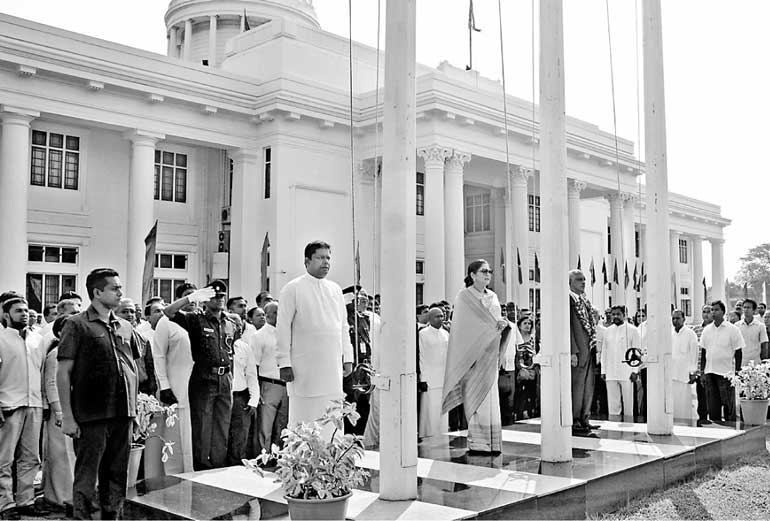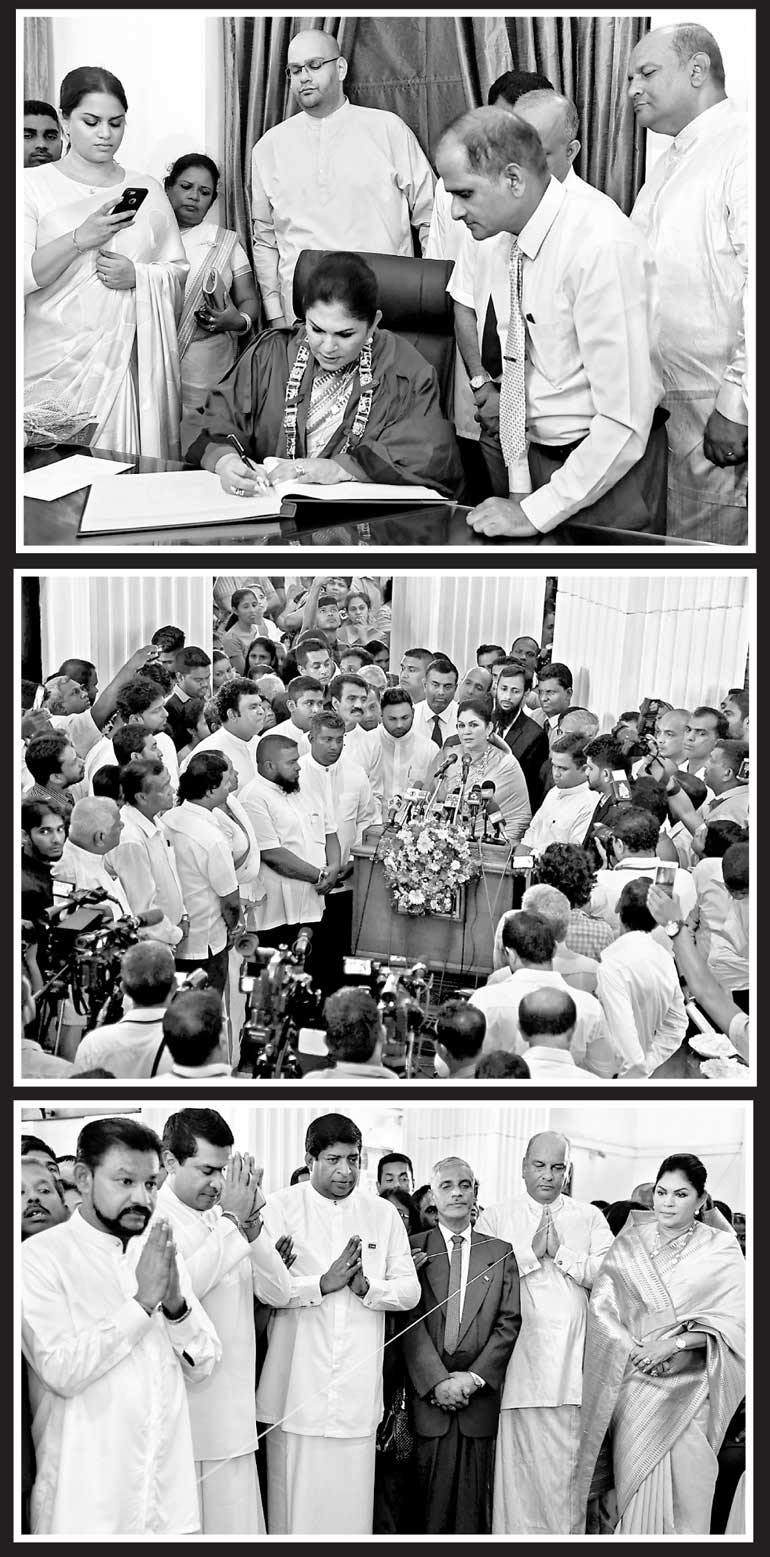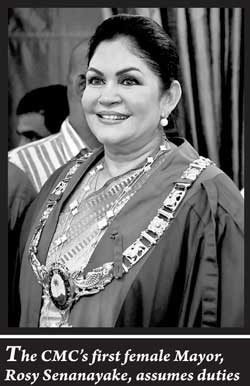Sunday Dec 07, 2025
Sunday Dec 07, 2025
Saturday, 24 March 2018 00:00 - - {{hitsCtrl.values.hits}}



In its 152-year-old history, the Colombo Municipal Council (CMC) saw the first female Mayor, Rosy Senanayake, assuming duties recently. In the formative years the CMC had a Chairman as head of administration. It was only in 1937 that a Mayor was elected for the first time.
Looking back at the administration of the city from earliest times after the British took over in 1796, Colombo, which became the administrative and commercial capital of Ceylon, was in charge of a Collector. John Macdowell of the Madras Service was the first to hold office as Collector. After 1833 the Government Agent (GA) of the Western Province administered the city.
The CMC met for the first time on 16 January 1866 with nine elected members (leading citizens) and five members nominated by the Governor (high government officials). Possibly as a continuation of the earlier arrangement, GA of the Western Province, Charles Peter Layard (later Sir), one of the nominated members became Chairman. He was a senior member of the Civil Service.
 The population of Colombo at the time was 80,000 as compared with the current figure of 555,031 (2011/12 Census). Today there is also a daily floating population of 400,000. The city covers an area of 37 sq.km.
The population of Colombo at the time was 80,000 as compared with the current figure of 555,031 (2011/12 Census). Today there is also a daily floating population of 400,000. The city covers an area of 37 sq.km.
After 10 years, Layard was succeeded by F.R. Saunders (later Sir) who was also a member of the Civil Service. He is best remembered as the Assistant Govt. Agent of Kegalle to whom Utuvankande Saradiel, the notorious bandit, surrendered. These two officials continued in their Civil Service appointments while being Chairmen of the CMC. In 1883 H.H. Cameron became full-time Chairman.
In the years that followed, numerous committees were appointed to go into reforms of CMC. Important changes were introduced by the Colombo Municipal (Constitution) Ordinance No. 6 of 1935. While the City was divided into 20 wards, it provided for an elected Chairman and Mayor and for an elected Deputy Mayor.
Dr. (later) Sir Ratnajothi Saravanamuttu was the first elected Mayor. Until he became Mayor in May 1937, there were 32 Chairmen who were all British officials. George R. de Silva was the first elected Deputy Mayor. He became Mayor in 1943.
The nine elected members to the first Council (1866) were C.L. Fernandes (Colpetty), Dr. F.W. Willisford (Slave Island), J.W. Venn (Fort), F.J. de Saram (San Sebastian), Dr. J.W. Van Geyzel (Pettah), S. Tambyah (St. Paul’s), C.A. Lorenz (Cottanchina), James D’Alwis (New Bazaar) and F.C. Loos (Marandahn). Of them, Van Geyzel served for 17 years, James D’Alwis for 12, Ferdinands for seven and Loresz for four years. (Note the spelling of certain wards!)
The nominated members were C.P. Layard (GA, WP), Dr. W.P. Charsley (Principal Chief Medical Officer), H.A. Evatt (Acting Chief Engineer and Commissioner of Roads), T. Berwick (Deputy Queen’s Advocate) and J.J. Grinlington (Assistant to the Surveyor-General).
The number of wards was gradually increased over the years. Nominated seats were abolished in 1943. Presently the number stands at 41 returning 119 members.
For at least seven decades, members were elected on the basis of personalities. The first signs of party politics were seen during the tenure of the first elected Mayor, R. Saravanamuttu, in 1937 when the members of the Labour Party led by A.E. Goonesinghe, the pioneer of the trade union movement in Ceylon, formed themselves into a group. Goonesinghe himself was the third elected Mayor (1940) after V.R. Shockman (1938/39).
 In later years, the United National Party has dominated the scene. The leftist parties served in the opposition most of the time. The election of LSSP leader Dr. N.M. Perera as Mayor in August 1954 was a landmark event. He served as Mayor until February 1956.
In later years, the United National Party has dominated the scene. The leftist parties served in the opposition most of the time. The election of LSSP leader Dr. N.M. Perera as Mayor in August 1954 was a landmark event. He served as Mayor until February 1956.
[Based on CMC Centenary Volume by H A J Hulugalle (1965).]
Pix by Kithsiri De Mel